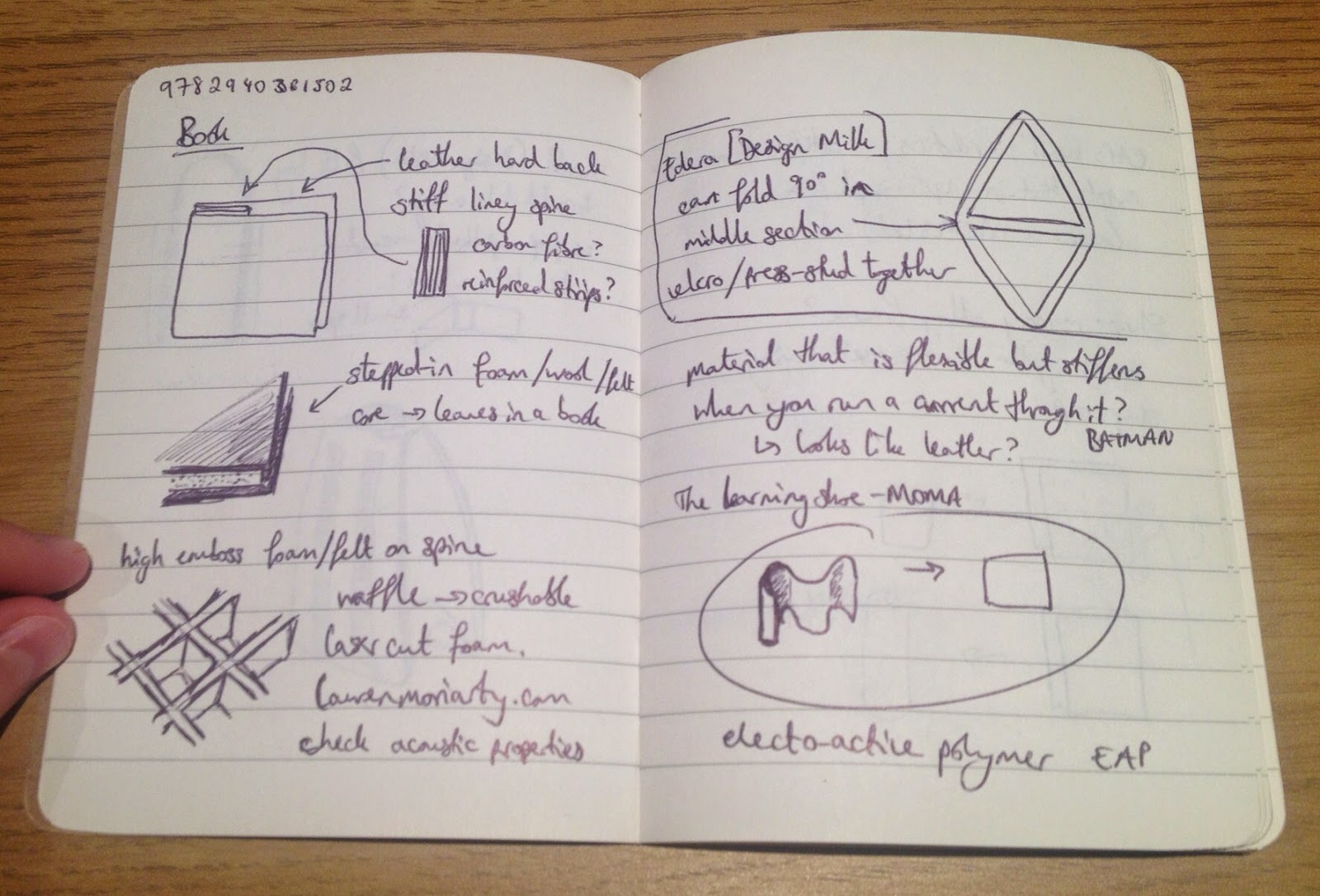After the feedback I was given during my last presentation, I decided that I needed to explore the narrative of the baffle more, and to start re-working it's form factor.
The two aims of the product are to; a) absorb sound and b) be compact. Though I'd looked into compressibility in the past and thought inflation might be a novel solution, I knew I had to come up with a compression method that had more to do with the narrative of the product.
In my mind, the ideal setting of the product would be a noisy area that you want to shield yourself from. Because of the size, and portable nature of the product, I kept going back to the analogy of a book, and propping up an open book in front of you while you are working; could it have the form of a book?
I started sketching out some ideas based around this, with two flat sides (like a hardback book) and a fully flexible spine. I thought about crushable patterns, and was inspired by the work of Lauren Moriarty, who uses a lasercutter to etch patterns into foam.
 |
| Crushable structures - Lauren Moriarty: Source |
.jpg) |
| Crushable structure - Lauren Moriarty: Plastics Handbook by Christopher Lefteri (Detail) |
 |
| Left: Sketches, Right: Detail of traditional Japanese kimono |
This lead me to look at paper. Though my product was going to be made of acoustic felt, I started looking at traditional paper folding techniques, origami and pop-up books, to allow the product to be folded down into a much smaller space.
 |
| Origami structure - Paul Jackson: Folding techniques for designers by Paul Jackson (detail) |
-----------------------------------------------------------
Books I've been reading:
Origami : the art of paper folding -
Paper engineering : 3D design techniques for a 2D material
Folding techniques for designers : from sheet to form - Paul
Cut and fold techniques for pop-up designs - Paul

